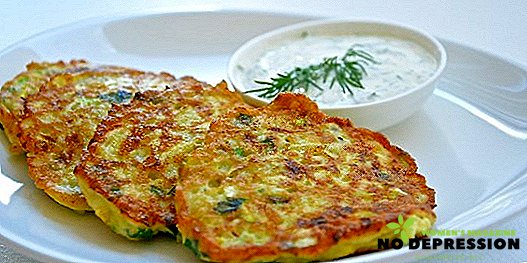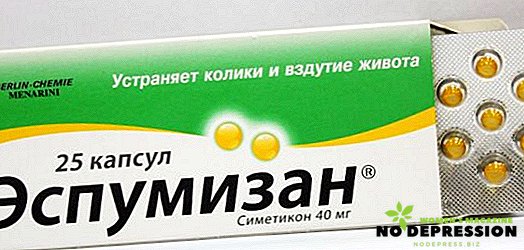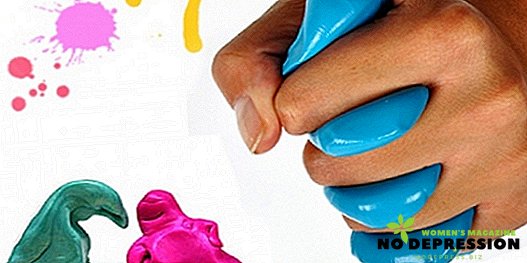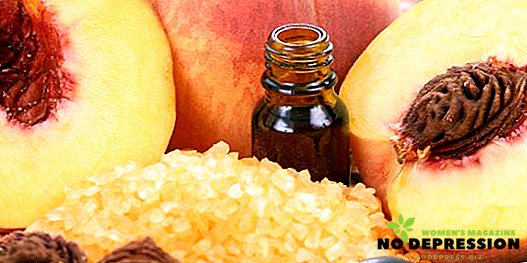Constipation can have various causes, some of them are harmless and can be easily eliminated at home, others are quite dangerous and require additional examination of the intestines and medical care.
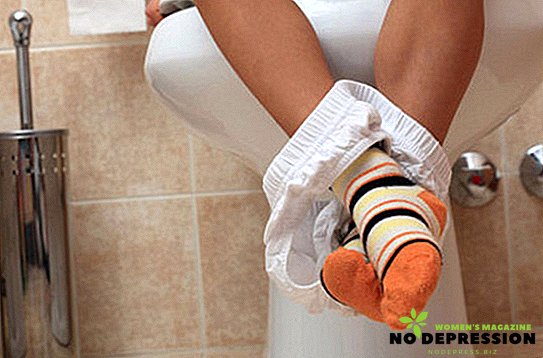
Constipation is a violation of the intestines, as a result of which the movement of feces stops or there are problems with their output. The feces themselves become hard and coarse. Not everyone knows what to do with constipation, especially if it is in a child. If you do not start to solve this problem in time, problems with defecation can provoke inflammation of the abdominal cavity or serious intoxication of the body.
Causes of constipation and its symptoms
The causes of this disease can be independent or constitute a complication of a chronic disease.
Independent reasons include:
- sleep disturbance;
- severe stress;
- problems in the work of the central nervous system;
- heavy food;
- little physical activity;
- lack of body fiber.

Among the main chronic diseases that can cause constipation are disorders of the gastrointestinal tract, ureters, etc.
The first symptom is difficulty with emptying the bowels for 2-3 days, and defecation can take place even every day, but with pain and difficulties, you need to make serious efforts.
In addition, pain may occur in the stomach, intestinal area.
The feces have a dense consistency, it is dry, even after a bowel movement there is a heaviness in the stomach. If this problem is associated with spasms in the intestine, then additional characteristic symptoms include: flatulence, abdominal distension, sharp cramps. If constipation becomes chronic, insomnia, heartburn, and problems with appetite may appear.
The first thing to refuse is coarse food, because it only worsens the condition and can cause bleeding.
Also avoid:
- active abdominal massage;
- warming up the abdomen;
- drinking alcohol.
What will help with problems during defecation
There are several ways to solve the problem.
Laxatives
Drugs with a laxative effect increase intestinal motility, which leads to its complete and easier emptying.
There are the following types of funds:
 Salt, which contain inorganic salts (magnesia, sodium sulfate and phosphates). Such drugs provoke mechanical irritation of the intestines. After taking them, the absorption of water and micronutrients decreases, the contents of the intestines are diluted, which leads to defecation. However, it is worth remembering that these tools are contraindicated under reduced pressure. After taking the drug begins to act within 2-3 hours, and they must be taken on an empty stomach in the morning. It should be noted that saline laxatives refer to emergency means - they are used in cases when it is necessary to remove toxins and slags as quickly as possible after poisoning, for example. After taking, abdominal pain may occur. It can not be taken with chronic constipation, for the treatment of children.
Salt, which contain inorganic salts (magnesia, sodium sulfate and phosphates). Such drugs provoke mechanical irritation of the intestines. After taking them, the absorption of water and micronutrients decreases, the contents of the intestines are diluted, which leads to defecation. However, it is worth remembering that these tools are contraindicated under reduced pressure. After taking the drug begins to act within 2-3 hours, and they must be taken on an empty stomach in the morning. It should be noted that saline laxatives refer to emergency means - they are used in cases when it is necessary to remove toxins and slags as quickly as possible after poisoning, for example. After taking, abdominal pain may occur. It can not be taken with chronic constipation, for the treatment of children.- Castor oil, which leads to irritation of the intestines, but chemically. Single emptying usually occurs 4-6 hours after ingestion. Use of castor oil is contraindicated during pregnancy, as oil can cause contraction of the walls of the uterus.
Among the well-known drug drugs are the most famous:
- Bisacodyl Reception of this remedy causes chemical irritation of the intestines. If you take it in the form of suppositories, then the effect comes pretty quickly - within an hour it begins to act. Can be used for both chronic and acute constipation.
- Guttalax It acts similarly to Bisacodil, however, it is better to take it at night with a small amount of water.
Laxatives are prebiotic drugs that are considered the safest. They restore the GIT microflora, which allows the intestines to be gently emptied. It is possible to apply such means for a long time, without causing harm to the health. The most famous "representatives": Lactulose and Prelaks.
Enema
Also, enemas help with constipation. If you carry out the procedure at home, you must carefully prepare and do not forget about the rules of hygiene.
When conducting an enema, you need to use only those "pears" that are equipped with a soft tip. The medical instrument itself must be sterilized, and the tip must be treated with petroleum jelly.
It is best to do an enema on the side or on the back, bending the legs. Enter the tip to a depth of no more than 6 cm in adults, 4 cm-y children. Content is let in very carefully and slowly. Moreover, you need to enter as much of the solution as required by the prescription - exceeding the dosage may adversely affect health.

Folk remedies
In addition, constipation can be eliminated with the help of folk remedies. Moreover, before using them, you should always consult with your doctor, in order to avoid serious complications.
In the fight against this problem will help:
- Broth oats. Take a handful of grains, pour 200 ml of boiling water, warm over low heat and leave to stand for a couple of hours. Take 100 ml of broth three times a day.
- Senna infusion, which is a strong laxative. Take 2 teaspoons of herbs, mix with 100 g of prunes without a stone, pour 600 ml of boiling water and leave for three hours. Then filter the liquid. Take 3-5 tbsp. every hour
- Flax seeds. Take 1 tsp. seeds, pour 200 ml of boiling water, leave to infuse for 6 hours, take before bedtime.
- Dandelion infusion (root). Take 2 tbsp. root, put in a thermos, pour 500 ml of boiling water. The next morning, strain the infusion, take in three doses 30 minutes before meals.
Features of the fight against constipation in children
The normal frequency of bowel movements in children of different ages is as follows:
- up to 4 months - 7-10 times a day;
- 4 months-2 years - from one to three times;
- in children older than two years - 1-2 times a day.
The absence of a stool for three days or more should be the reason for going to the doctor, since this may indicate the presence of diseases, especially if we speak about the child. As in adults, problems with defecation can be caused by improper diet, low consumption of clean water, but it can also be a sign:

- dysbacteriosis;
- allergies;
- hypothyroidism.
In children, this problem can also be caused by psychological aspects, for example, a sharp transfer to the garden, too tough potty training, etc.
Symptoms in children
Symptoms in a child are different from constipation in an adult — a lot depends on age.
In infants
In children up to half a year, constipation is manifested by the lack of self-defecation, but there are also excreted feces. Vomiting, regurgitation may also occur. When constipated, the child is very nervous, worried, pulls the legs to the stomach.
In children from 6 to 10 years
At this age, constipation is considered to be the absence of bowel movement during the day, and when trying to empty the baby crying, experiencing discomfort and pain. There may be blood in the feces. There may also be abdominal and intestinal pain.
Teenagers
In children over 10 years of age, severe abdominal distention, pain, and severe constipation may cause bleeding. In addition, the child feels weak, in the mouth - an unpleasant taste.
That is why it is so important to know how to solve the problem of constipation, until it has turned into a chronic form - in this case, severe inflammation can begin, cracks and ulcers can appear in the rectum.
Treatment of constipation at different ages
For treatment, you can use drugs:
- Laxatives From the age of three, Fitomucil can be given to the child, since it is a fairly safe remedy from plum pulp and psyllium seed sheath.
- Prebiotics that can be given from the very beginning of life. For example, Bifidumbakterin.
- Antispasmodics that help get rid of stomach cramps, such as Drotaverinum. Can be given to children from three years.
- Enzyme or diuretic drugs. They help to optimize the digestive process, stimulate the synthesis of bile in the body. The most popular means: Pancreatin or Allohol.
- Prokinetics that stimulate intestinal motility. Allowed to take from the age of two. The most famous is Metoclopramide.

When treating children, they use folk remedies, but before using them you need to consult a doctor, since some recipes are suitable for one-year-old children, others are only for children 6 years and older.
As a laxative, you can use oils, such as vegetable or flaxseed. If the problem is in infants, 1-2 drops should be added to the milk mixture; for children from 6 years old, it is recommended to give 8-10 ml each in the evening and in the morning.
If constipation torments a child at the age of two years, pure beet juice can help: begin to give 2 drops, gradually increasing the dosage to 1 tsp. Good helps children's tea with fennel, prune water.
Diet for problems with emptying
Give the child as much clean water as possible. The diet should include meat and fish (low-fat), dairy products, vegetables, soft dried fruits, allowed by age.
At the same time, both children and lactating mothers need to exclude fast food, crackers, soda from the diet. Reduce to a minimum, but rather eliminate tea, coffee, semolina or rice porridge, white bread.
By adhering to these simple rules, you can quickly get rid of such troubles as constipation.


 Salt, which contain inorganic salts (magnesia, sodium sulfate and phosphates). Such drugs provoke mechanical irritation of the intestines. After taking them, the absorption of water and micronutrients decreases, the contents of the intestines are diluted, which leads to defecation. However, it is worth remembering that these tools are contraindicated under reduced pressure. After taking the drug begins to act within 2-3 hours, and they must be taken on an empty stomach in the morning. It should be noted that saline laxatives refer to emergency means - they are used in cases when it is necessary to remove toxins and slags as quickly as possible after poisoning, for example. After taking, abdominal pain may occur. It can not be taken with chronic constipation, for the treatment of children.
Salt, which contain inorganic salts (magnesia, sodium sulfate and phosphates). Such drugs provoke mechanical irritation of the intestines. After taking them, the absorption of water and micronutrients decreases, the contents of the intestines are diluted, which leads to defecation. However, it is worth remembering that these tools are contraindicated under reduced pressure. After taking the drug begins to act within 2-3 hours, and they must be taken on an empty stomach in the morning. It should be noted that saline laxatives refer to emergency means - they are used in cases when it is necessary to remove toxins and slags as quickly as possible after poisoning, for example. After taking, abdominal pain may occur. It can not be taken with chronic constipation, for the treatment of children.
